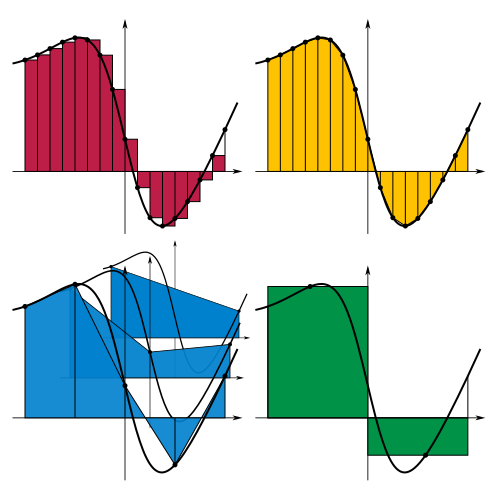Day 10 - Integrating EOMs Numerically#

Announcements#
HW 4 is posted; starting project work
Midterm 1 is coming up (Assigned 29 Sep; Due 10 Oct)
REMINDER: Office hours, for now (Mihir-MN; Danny-DC):
Tuesday 6-8pm (MN, Zoom)
Thursday 6-8pm (MN, Zoom)
Friday 2-4pm (DC, 1248 BPS)
Zoom Link: https://msu.zoom.us/j/96882248075
password:
phy321msu
Friday’s Class: Homework 4 Exercise 3 + Q&A
Seminars this week#
WEDNESDAY, September 17, 2025#
Astronomy Seminar, 1:30 pm, 1400 BPS, In Person and Zoom, Host~ Speaker: Matthew Murphy, Michigan State University Title: Zoom Link: https://msu.zoom.us/j/887295421?pwd=N1NFb0tVU29JL2FFSkk0cStpanR3UT09 Meeting ID: 887-295-421 Passcode: 002454
Seminars this week#
WEDNESDAY, September 17, 2025#
FRIB Nuclear Science Seminar, 3:30pm., FRIB 1300 Auditorium and online via Zoom Speaker: Katie Yurkewicz of Argonne National Laboratory (MSU ALUM) Title: From Nuclei to Narratives: Lessons Learned on the Journey from NSCL Student to Lab Communications Leader Please see website for full abstract. Please click the link below to join the webinar: Join Zoom: https://msu.zoom.us/j/96657965451?pwd=Isaf23sK5agzaao0Kwaei7AaWHkc4W.1 Meeting ID: 966 5796 5451 Passcode: 479842
Seminars this week#
FRIDAY, September 19, 2025#
QuIC Seminar, 12:30pm, -1:30pm, 1300 BPS, In Person
Speaker: Jeremiah Rowland, Michigan State University
Title: Measurement Reduction Techniques for Measuring Hamiltonians
Full Scheule is at: https://sites.google.com/msu.edu/quic-seminar/
For more information, reach out to Ryan LaRose
Reminder: email me your extra credit seminar write-ups
Goals for this week#

Establish a model for drag forces
Develop an understanding of the process for modeling forces
Produce equations of motion that can be investigated
Start probing the behavior of these systems with math and computing
Model-to-EOM Pipeline for Classical Mechanics#
✅ Develop conceptual description of the system; make justifiable assumptions
✅ Using a framework of physics (i.e., Newton’s Laws, Lagrangian Dynamics), develop a mathematical model of the system
✅ Produce the equations of motion (EOM) by following the framework (i.e., ordinary differential equations)
😵 Solve for trajectories of the system (e.g., \(x(t)\), \(v(t)\), \(v(x)\))
Most EOMs are nonlinear#
We need approximate methods to produce trajectories#
Clicker Question 10-1#
We found that the equation of motion for the spring-mass system was:
Your friends have proposed the following general solutions:
How many of them are correct? (1) Only one (2) Two (3) Three (4) Four (5) All of them
Clicker Question 10-2#
To convert the second order ODE for a spring mass system,
to two first order ODEs, we first introduce an equation for the velocity:
This is a first order ODE, and the first one we need. What is the other first order ODE?
Clicker Question 10-2#
For spring-mass system (\(\ddot{x} = -\omega^2 x\)), and using the first order ODE the defines velocity \(v = \dot{x}\), which other first order ODE can be used with the velocity equation to represent the spring mass system?
\(\dot{x} = -\omega^2 x\)
\(\dot{v} = -\omega^2 x\)
\(\ddot{x} = a\)
\(\dot{v} = a\)
Something else
Clicker Question 10-3#
We derived the Euler step for constant acceleration:
We can implement in Python for arrays x and v with:
v[i+1]=v[i]+a*deltat # Constant Acceleration
x[i+1]=x[i]+v[i]*deltat # Euler Step
How can we implement a non-constant acceleration?
Clicker Question 10-3#
How can we implement a non-constant acceleration?
v[i+1]=v[i]+a*deltat # Constant Acceleration
x[i+1]=x[i]+v[i]*deltat # Euler Step
Add in
a[i]to the first equationPre-compute the array
aoutside the loopCompute
a[i]in the loopChange
v[i]tov[i+1]More than one of these
